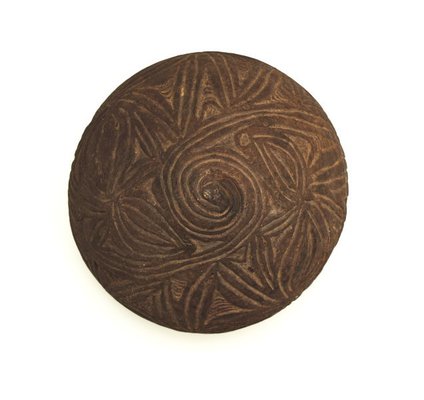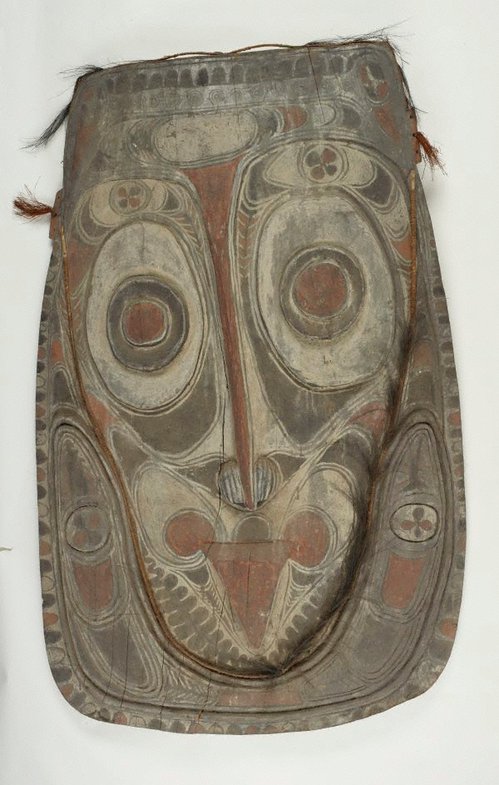Title
Pelu kámané (serving bowl)
mid 20th century
collected 1965
Artist
-
Details
- Place where the work was made
-
Kamangaui Village
→
Middle Sepik River
→
East Sepik Province
→
Papua New Guinea
- Cultural origin
- Sawos people
- Dates
- mid 20th century
collected 1965 - Media category
- Ceramic
- Materials used
- earthenware, coiled and chip-carved
- Dimensions
- 24.0 cm height; 25.5 diameter
- Credit
- Purchased 1965
- Location
- Not on display
- Accession number
- 419.1994
- Copyright
- Artist information
-
Sawos people
Works in the collection
- Share
-
-
About
Kamangaui is one of several Sawos villages known for their conical-shaped pottery bowls, used for serving food. Pots and sago are traded from Kamangaui to Timbunke and Tambanum on the Sepik River, in exchange for fish, requiring a three-hour walk in either direction.
Clay is dug solely by women who also make the initial form using a coiling technique. Men then decorate the pots with a prodigious variety of designs, each depicting specific totems of the clans they represent. With its slightly closed opening that keeps food warm, this bowl is known as a 'pelu kámané'. According to Gabriel Mowe from Kamangaui, the design recalls the 'silik nyuwa' (spider webs) found inside a village house.
[entry from Exhibition Guide for 'Melanesian art: redux', 2018, cat no 11]
-
Exhibition history
Shown in 1 exhibition
Melanesian art: redux, Art Gallery of New South Wales, Sydney, 17 Nov 2018–17 Feb 2019
-
Bibliography
Referenced in 1 publication
-
Tony Tuckson, Aboriginal and Melanesian art, Sydney, 1973, 46. cat.no. 110; 'Serving bowl. Karawari River? Clay, low fired, carved. 24 h. Collected Tambanum 165'
-





